Social and emotional learning (SEL) is a hot educational trend, and it’s one that provides an array of benefits. Not only can it increase students’ academic achievement, but SEL activities can build students’ self-awareness, self-management, social awareness, relationship skills, and responsible decision making, according to CASEL, which developed these core SEL competencies to guide educators. All of these skills are important for students’ academic, social, and eventually, professional lives.
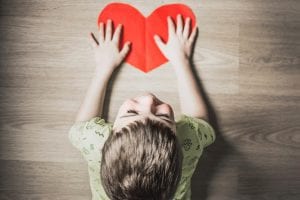
Why combine SEL with Global Learning? (aka, Global Citizenship Education)?
Combining SEL with global learning is an excellent way to deepen students’ interpersonal skills while honing students’ knowledge and awareness of world issues. Global learning, sometimes called “global citizenship education,” aims to empower students to “assume active roles, both locally and globally, in building more peaceful, tolerant, inclusive and secure societies”, according to UNESCO. The UN defines it as “building a sense of belonging to a common humanity” and helping learners become responsible and active global citizens.
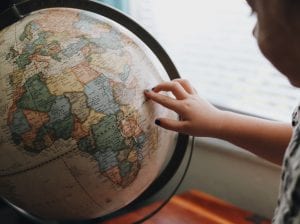 SEL’s benefits naturally lend themselves to global learning, and vice-versa, as both approaches aim to foster respect, collaboration, and responsible decision-making in students. From addressing climate change to promoting world peace and security, it’s crucial that the next generation is prepared and equipped with skills to work together with other cultures and nations to solve common global challenges. With the adaptation of the UN Sustainable Development Goals, teachers around the world are finding ways to integrate these important issues and teach about the global goals in their classrooms.
SEL’s benefits naturally lend themselves to global learning, and vice-versa, as both approaches aim to foster respect, collaboration, and responsible decision-making in students. From addressing climate change to promoting world peace and security, it’s crucial that the next generation is prepared and equipped with skills to work together with other cultures and nations to solve common global challenges. With the adaptation of the UN Sustainable Development Goals, teachers around the world are finding ways to integrate these important issues and teach about the global goals in their classrooms.
We’ve rounded up some of our favorite standards-aligned lessons to help you bring these global topics to your students, while fostering social and emotional learning!
Global Learning SEL Activities for Elementary Students:
Go Fish
Grades: K-2
Subjects: Math, Science, Social Studies
Topics: Sustainability Behavior, Sharing, and Cooperation
In the hands-on activity Go Fish, students share a bowl of goldfish crackers to simulate the challenges of sharing a “resource” equally. After passing around the bowl, students compare the number of goldfish each person has, and then come up with a way so that everyone can have an equal amount on the next turn. Through problem solving and talking about how it feels to have less or more, students will learn how they can share other things and work cooperatively with others. At the end of the activity, the teacher distributes an equal amount of goldfish to everyone to eat.
SEL and Global Connections:
To help students identify their emotions, ask students to name and describe their emotion after the first round, when, almost always, some students will have a lot more goldfish than others. Are they disappointed? Happy? If some students feel sad because they have too little, or feel bad because they have too much, emphasize and reassure them that we are going to find a solution and everyone will have an equal amount very soon! Ask students to name things we share in the classroom (crayons, chairs, etc.) and things we share in the world (oceans, fish, food, water, etc.). For the classroom, ask them to come up with ways they can share things more equally with their peers. For global learning, ask them why is it important to protect resources the world shares?
Pro tip! This lesson works well in the beginning of the school year, to establish “sharing” rules and community with new students.
Helping Hands
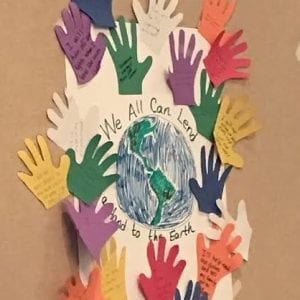
Grades: K-5
Subjects: Language Arts and Social Studies
Topics: Civic Action (Community service project topic of choice)
The lesson Helping Hands begins with students reading and discussing a folk story about helping people in need. Students then complete a service learning activity – they work together to identify a cause they care about, such as assisting refugees or helping animals, and then identify a local organization that’s helping. Students will assist with creating and running a donation drive for a local organization by collecting items in need, whether it’s winter coats to a refugee resettlement program or pet care supplies to an animal shelter. Students can also find creative ways to raise money instead of donating physical items. Check with the local organization first to see what need is greatest.
SEL and Global Connections:
At the end of the project, students will describe how participating in a community service project made them feel, both during and after. As a class, you can also ask students why people should help each other. Do they think it is important to help people in other countries (and not just in their town)? Why?
To connect to global learning, ask students to brainstorm how they could address the issue in the global community. For example, if your community project donated to a food bank or animal shelter, you could introduce students to an international or local organization abroad tackling hunger or wildlife preservation.
What Would You Do?
Grades: 4-5
Subjects: Language Arts, Science, Social Studies
Topics: Environmental Stewardship and Sustainability
In the activity What Would You Do?, students will examine their own values after considering and discussing several social and environmental dilemmas. In small groups, students will each receive a “Dilemma Card” that describes a challenge they might face during an average day and several choices of action. Each student reads their provided dilemma to the group and discusses which action they would choose. Other students in the group can offer their thoughts, and the original card holder can also offer clarification of their decision. Before this activity, emphasize and remind students to practice respectful listening.
SEL and Global Connections:
This activity supports students’ responsible decision making and relationship skills development, two of the core SEL competencies. To take the SEL lesson even further, ask students if there were any dilemmas that were difficult or that they were not sure about? (Some of the environmental dilemmas, for example, like picking up litter, are more clear than others). To assess, ask students to write a journal reflection of their most difficult dilemma, and to summarize their reasoning for their decision. Were there any decisions they heard in their group they disagree with? Why? Finally, ask them to reflect on how this exercise might change or influence their behavior towards an environmental issue in the future.
To deepen students’ global learning, ask them to connect their “Dilemma Card” to one or more of the UN’s Sustainable Development Goals. Ask them to summarize the global goal and how it connects to their dilemma. For example, if the “Dilemma Card” was about conserving water in their house, they might connect that dilemma to the global goal “Responsible Consumption and Production”.
Global Learning SEL Activities for Middle School Students:
One for All
Grades: 6-8
Subjects: Math, Science, Social Studies
Topics: Renewable Resources and Conservation
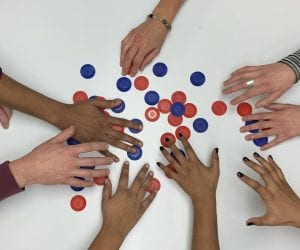
One for All is a simulation game where students learn how to “manage” shared community resources. Poker chips represent a renewable resource in the game and are placed in the center of a circle of students. There is a finite number of chips and students must balance their desire for ten chips (which they can trade in for a piece of candy) with the need to not deplete the pool of chips for the group. The goal is that eventually students find a strategy to ensure all participants walk away with candy.
SEL and Global Connections:
This lesson promotes SEL’s responsible decision making and self-management core competencies, because as the rounds continue, many students learn to control individual impulses of taking for personal gain and learn to cooperate with each other for a mutually beneficial outcome. However, sometimes someone will become impatient, and will take more or all of the remaining chips to get the reward. This is a great teachable moment with discussion questions included in the lesson. You can also ask students to reflect on their feelings about the actions of others, such as: “How did it make you feel when some people took more than others? Have you experienced a similar situation at home, with friends, or in the community?”
To encourage broader global learning, ask students to compare the chips to the greater world. “What do these chips represent?” you can ask, opening a discussion about renewable resources such as trees, fish, etc. and the differences between renewable and non-renewable resources. Then, ask them: “What sort of attitude do we need as individuals to achieve the goal of the greatest benefit for all?” You can introduce the Sustainable Development Goal #12 “Responsible Consumption and Production” by asking students if they think the world’s natural resources are currently shared equally and managed sustainably. SDG #14 and SDG #15 aim to protect marine ecosystems and land use. You can introduce these, as well, by asking students for examples of progress relating to these goals and actionable ways they can help further these goals in their individual lives and local communities.
People on the Move
Grades: 6-8
Subjects: Environmental Science, Economics, Social Studies
Topics: Migration and Human Rights
In People on the Move, students participate in a simulation game that shows the push/pull factors that may influence someone’s decisions to migrate – the room is divided into two areas and students in one of these areas receive candy. Not because of who they are or what they’ve done, but simply because they’re located in that area. Soon, students from the other side of the room will realize what’s happening and move into the area where candy is provided. Other adaptations beyond a candy “reward” are provided to show the many different motivations for migration.
SEL and Global Connections:
After the simulation, discussion questions will help students focus on building understanding and empathy for others, two core competencies in social-emotional learning. Ask students in the area with candy how they felt to have access to the candy. What about the others? Discuss what challenges they think people might people face when moving from one country to another. Ask students to brainstorm limitations of this simulation – what hardships migrants might experience that aren’t seen here?
One goal of SEL is to increase students’ ability to empathize with people from diverse backgrounds. To promote this goal while providing students with a real-world connection to a global topic, invite a guest speaker to the classroom to share their migration story or ask students to interview someone who moved from another country or community different from theirs.
Analyzing Environmental Justice
Grades: 6-8
Subjects: Social Studies, Environmental Science
Topics: Environmental Justice and Pollution
In this lesson plan by Teaching Tolerance, students deepen their understanding of how pollution disproportionally effects certain communities in the U.S. by analyzing maps and data to make correlations between race, socio-economic status, and environmental injustice. With this foundation, students then can connect local issues to similar issues abroad.
SEL and Global Connections:
This lesson especially promotes social awareness, one of the SEL competencies, as discussion questions help students identify and reflect on what they see as unfair on the maps, as well as asking them to consider why it might be hard for folks to move somewhere less polluted. The lesson includes discussion prompts and follow-up activities that help students consider their own communities and neighbors, and ways they can take action to help.
To increase global learning, ask students to bring in a news article about an environmental injustice issue in a different country, and summarize to the class how it is effecting that community. Examples can be the impacts of oil spills on indigenous communities in the Amazon Rainforest or the effects of cobalt mining in the Democratic Republic of the Congo. Ask students to note the similarities and differences between the issues in their article and the lesson about environmental injustice in the U.S.To increase self-awareness of their emotions, a core SEL competency, ask them what they felt while reading the article. (They may say angry, sad, shocked, discouraged, etc.) Ask them what ways people like themselves could take action to find positive solutions for this problem.
Global Learning SEL Activities for High School Students:
Needs Vs. Wants in a Finite World
Grades: 9-12
Subjects: Environmental Science, Economics
Topics: Ecological Footprint and Consumption
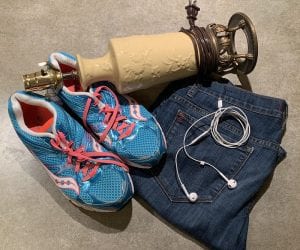
In this needs/wants lesson, students examine varying levels of human needs by discussing and analyzing the nuances between modern day humans’ needs and wants, including their own. Students learn about Maslow’s hierarchy of needs as well as how their needs and wants contribute to their “ecological footprints,” which are the amount of resources used to satisfy these needs and wants. After completing activities where they prioritize their needs vs. wants and cross off items they’re willing to give up, the teacher will introduce the following discussion questions: “How do you think giving up items on this list would affect your happiness?” and “Are there alternatives to totally giving up the items on your list that you crossed off?” (Examples can include sharing, or finding more efficient ways to use it, etc.)
SEL and Global Connections:
To promote relationship skills building, a core SEL competency, ask student groups of four to combine all of their “wants” from their individual lists. One person will be the note taker and write down the group’s list. Now, ask the group to eliminate half of the group’s total wants that they would be willing to give up or reduce in order to reduce their environmental impact. Remind students to practice respectful listening as they come to a consensus. Encourage students to express why they listed something as a “want” and why it should not, or should, be eliminated from the group list.
To encourage reflection, ask the class if they encountered any disagreements in deciding which “wants” to keep. How was this resolved? How did it make you feel to compromise? If you don’t feel it went well, what would you do in the future, to improve group cooperation and decision-making?
For an even stronger global learning connection, revisit the lesson’s concept of “ecological footprints.” Ask students to select one item from their group’s “want” list and research its “ecological footprint” by completing a life-cycle assessment. Ask students to then find out what is being done to lessen that product’s overall environmental impact.
Don’t Take Our Voices Away: A Role Play on the Indigenous Peoples’ Global Summit on Climate Change
Grades: 9-12
Subjects: Environmental Science, Social Studies, Civics
Topics: Environmental Justice and Indigenous Rights
Inspired by the 2009 Indigenous Peoples’ Global Summit on Climate Change in Anchorage, Alaska, this lesson from the Zinn Education Project is a simulated climate summit. The Don’t Take Our Voices Away lesson helps broaden students’ perspectives of climate change impacts while deepening their empathy for those impacted by climate injustice, which ties into SEL’s goals of fostering students’ social awareness and empathy. Students also hone their cooperation skills while collaborating across groups to create “one voice” to prompt greater global action and awareness.
SEL and Global Connections:
To begin, each group receives one of six identity cards, with detailed information about how climate change, as well as climate change mitigation strategies, effect a specific indigenous community. This is the group students will represent in the summit. After reading, reflecting, and discussing their identity card with their group, the simulation summit begins. Groups will discuss, share, and then provide a unified answer to a series of questions at the “summit”, such as “What actions would you like to see the rest of the world take to address the problems facing Indigenous Peoples as a result of climate change? Put these in order of priority.”
Hunger Banquet
Grades: 9-12
Subjects: Social Studies, Geography/Economics
Topics: Global Wealth Distribution and Inequality
By participating in a Hunger Banquet, students participate in a luncheon activity which simulates global wealth inequality and allows them to examine their own values and analyze how inequality shapes food access around the world. The teacher sets up different dining areas for “Low” “Middle” or “High” income countries and assigns each student a country card associated with one of the three areas. The country card lists the rules for their income-level role. The lesson outlines how to set-up and execute the meal. During the simulation, students experiencing the unequal conditions between groups will sometimes search for ways to remedy this, such as sharing with those who have less. At the end of the simulation, the teacher drops the rules and all students share in an equal dining experience.
SEL and Global Connections:
Discussion questions prompt students to reflect on how they felt about their role and how they felt towards people in the other groups, if those feelings changed as the simulation went on, and if they agreed with the solutions that came up (if any) throughout the activity. At the end, ask students how this activity makes them think about their own community, city, or country. These questions can sharpen students’ self-awareness, a core SEL competency that also includes their ability to “recognize their emotions and thoughts and reflect on their influence on behavior,” according to CASEL.
To help students go beyond the simulation and see a more real-world global perspective, ask them research a country from the income category on their country card and summarize what food and hunger challenges that country faces. To help them spark ideas, introduce the Sustainable Development Goal #2 “No Hunger.” Students can look at the goal’s targets to see the specific desired outcomes, as well as different approaches to ending world hunger. Ask them to find out what their country is doing to help alleviate hunger, from government programs to local non-profit groups. You can also ask students to come up with three ways they can address global inequality in the world. Ideas can range from volunteering at a food bank, donating, or spreading awareness. What organizations are working to help this issue in their city?
A note about the activity: Since food insecurity affects many students, teachers should use their own judgement to decide if this lesson is appropriate to enact their classroom.
More Social Emotional Learning Resources
Edutopia’s 13 Powerful SEL Activities: www.edutopia.org/article/13-powerful-sel-activities-emelina-minero
ACEI Presentation on ‘Social and Emotional Learning: the Key to Building Global Citizenship’: mgiep.unesco.org/socio-emotional-learning-for-global-citizenship
The Collaborative for Academic, Social, and Emotional Learning (CASEL): casel.org
Image credits: Child with heart (Anna Kolosyuk on Unsplash); Child with globe (Amy Humphries on Unsplash)



